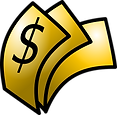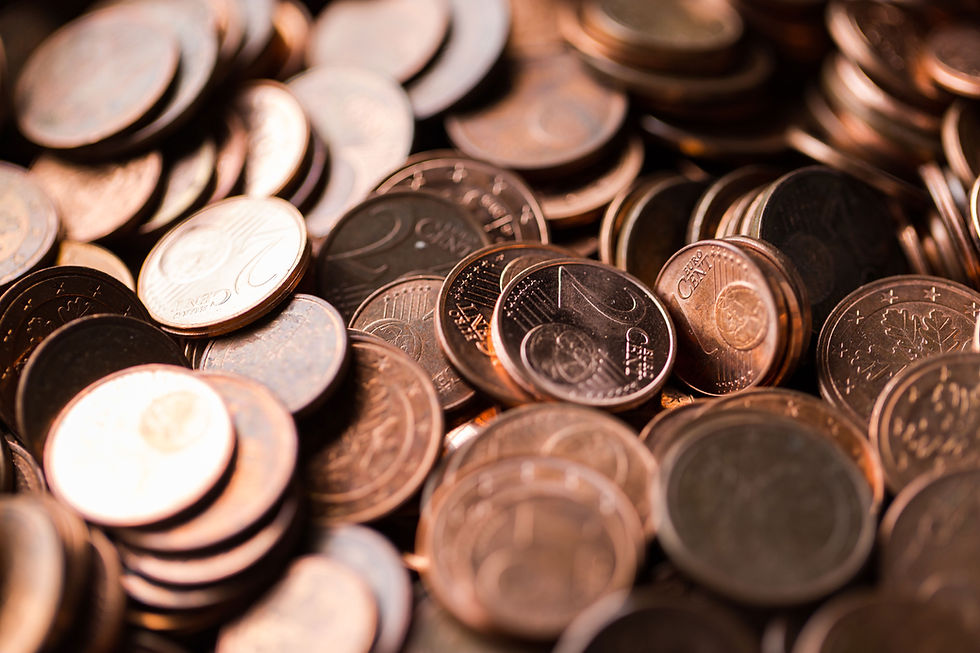China Currency - The Yuan
- currencyuniverse

- Apr 23, 2022
- 4 min read

Image Courtesy: https://www.pixabay.com
The renminbi is the official currency of the People's Republic of China and one of the world's reserve currencies, ranking as the eighth most traded currency in the world as of April 2019. Morgan Stanley analysts maintain their prediction that the Chinese yuan will account for 5% to 10% of global foreign exchange reserve assets by 2030. The yuan currently accounts for about 2% of global foreign exchange reserve assets, they said.
The true value of the yuan is difficult to ascertain, and although various studies over the years suggest a wide range of undervaluation - from as low as 3% to as high as 50% - the general agreement is that the currency is substantially undervalued. By keeping the yuan at artificially low levels, China makes its exports more competitive in the global marketplace. China achieves this by pegging the yuan to the U.S. dollar at a daily reference rate set by the People’s Bank of China (PBOC) and allowing the currency to fluctuate within a fixed band (set at 1% as of January 2014) on either side of the reference rate. Because the yuan would appreciate significantly against the greenback if it were allowed to float freely, China caps its rise by buying dollars and selling yuan. This relentless dollar accumulation led to China’s foreign exchange reserves becoming $3.22 trillion as of November 2021.
Yuan vs. Renminbi: What's the Difference?
Chinese money, however, comes by two names: the Yuan (CNY) and the people's renminbi (RMB). The distinction is subtle: while renminbi is the official currency of China where it acts as a medium of exchange, the yuan is the unit of account of the country's economic and financial system.
CNY vs. RMB: Key Differences
With Beijing looking at the internationalization of its currency, one question continues to perplex many: Does China have two currencies? Does it use the yuan (¥), the renminbi (RMB), or both?
Renminbi is the official currency of the People's Republic of China, and means "people's currency" in Mandarin. The yuan is a unit of the currency. Renminbi and yuan are often used interchangeably.4 The communist party established the People’s Bank of China and issued the first RMB in December 1948, about a year before it defeated the Kuomintang government.
Yuan is the unit of account. The largest banknote is 100 yuan, followed by 50 yuan, 20 yuan, 10 yuan, 5 yuan, 2 yuan and 1 yuan. One yuan can be further divided into jiao and fen. There are 10 jiao in a yuan (think dimes in a dollar) and 100 fen in a yuan (think pennies in a dollar). The central bank has issued both coins and notes for jiao and fen, though notes for fen denominations are rare.
Origins and History
The first objects used as currency in China were sea shells, which triggered the start of a barter system. Later on, bronze coins would be created as substitutes for those objects. The reason to mint coins in this material was that China had already been using it for a long time.
The growth of trade and the development of markets lead to the surface of several kinds of currencies such as fabrics (bu bi), knives (dao bin), shells carved in bronze (daiming tongbei) and round coins (huan qian), dating back to the era prior to the Qin dynasty. These are the result of the rapid development that the market economy was experiencing, which explains why currencies were based on shapes, instruments and tools used at that time. Those also varied according to the region and city. "
The Banknote Has Distinct Watermarks
There are securities lines on each banknote, printed in a light pink or silver, with small lettering written along the edge of it. The letters are very hard to replicate for safety. There are also a few watermarks that appear when held to the light, such as a rose and a white denomination.
Chinese Currency Has Many Names
Chinese currency is called Renminbi, but it is also called the Chinese yuan. Colloquially, the yuan is called kuai. The ISO for this currency is CNY, or CNH in Hong Kong, but RMB can also be seen in many places. The currency can also be indicated with the yuan sign, ¥.
Fake Banknotes Feel Different
CNY has "People's Bank of China" written on them in braille, for the visually-impaired. These areas of the note are more concave and convex. There is a clear resistance when you feel those parts. Fake banknotes can be easily spotted by feeling the banknotes; they will be completely smooth.

Image Courtesy: https://www.pixabay.com
Few Important Points of the Chinese Yuan (CNY)
Symbols: ¥
ISO code: CNY
Central Bank: People's Bank of China
Currency Subunit: Fen = 1/100
Denominations: Banknotes: ¥0.1,¥1,¥5,¥10,¥20,¥50,¥100
Coins: ¥0.1,¥0.5,¥1
Countries using this currency: China
Value of the Chinese Yuan (As on 23/04/2022)
1 Chinese Yuan = INR 11.76 (Indian Rupees)
1 Chinese Yuan = PKR 28.88 (Pakistani Rupees)
1 Chinese Yuan = BDT 13.25 (Bangladeshi Taka)
1 Chinese Yuan = USD 0.15 (United States Dollar)
1 Chinese Yuan = EURO 0.14 (Euro)
You can watch the following videos in YouTube in my channel "CURRENCY UNIVERSE" to know more about the Chinese Yuan. Please note that the videos are in Hindi.
CHINA CURRENCY RATE IN INDIAN RUPEES
INDIA VS CHINA CURRENCY COMPARISON VIDEO
Have any thoughts. Be sure to leave a comment below for any doubts or queries !!
Contact me through Instagram @currencyuniverse (https://www.instagram.com/currencyuniverse)
Last updated on 23/04/2022




Comentários